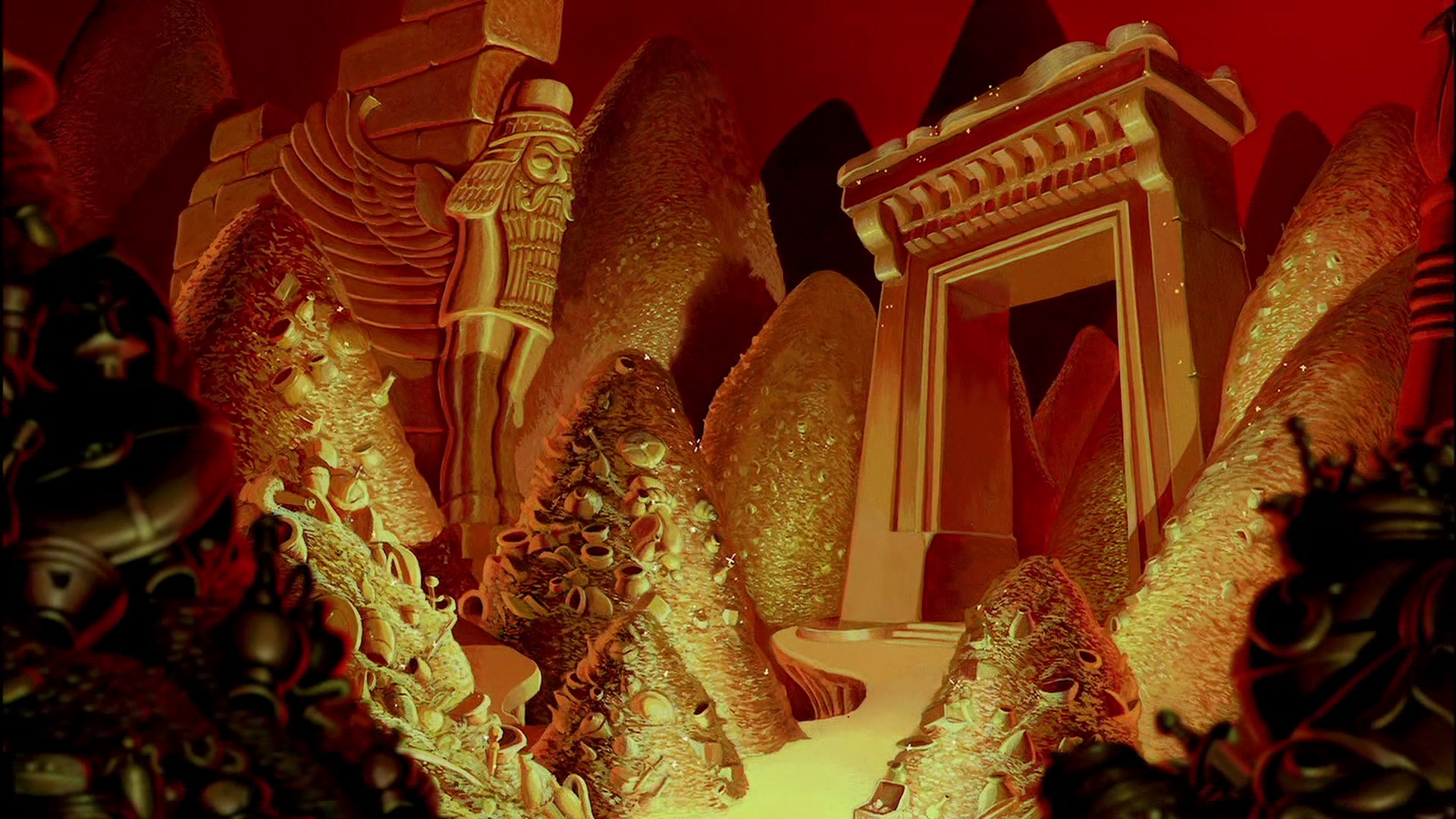
For the only way to see oneself in a new light–to grow and change in a positive way– is to allow one’s inner protagonist and antagonist to confront each other. Through the rose-tinted lens of Disney, this article will show why it’s imperative to confront one’s inner demons. Though Disney has no shortage of exceptional protagonists, it is the rags-to-riches story of Aladdin, as well as the flight from a patriarchal regime in Mulan that this article will use to examine Carl Jung’s Shadow Theory.

Indeed, Disney characters typically overcome immense personal challenges, which are made more palatable through a little song and dance. Far from being “mere children’s movies,” Disney doesn’t shy away from the darker aspects of human struggle. Loved worldwide, Disney has built an empire of heroes that many can relate to regardless of age, creed, or background. Arguably, no production studio has created a stable of more relatable characters than Disney.
THE CAVE OF WONDERS MOVIE
When a movie clicks with us, we find ourselves rooting for the protagonist or hero of the picture. If a film connects with the struggles that an audience member (consciously or unconsciously) intended to leave at the door, in all likelihood it will resonate with them more powerfully. The irony of this is that often what draws a person into a film is not the protagonist’s story, but rather one’s empathetic connection to their story. Sitting in a dark theater, it’s easy to become enveloped in the story of a silver-screen protagonist.
Exhibition hall.Movies have often been seen as the perfect two-hour break from life, an escape into the lives of others that offer a respite from personal challenges and struggles. The tour is complemented by other attractions to be found outside the cave. Similarly, the Galería Pictográfica displays a fabulous collection of pictographs created by the indigenous inhabitants, and dating back between 500 and 800 years. Another highlight is the Gran Panel, which shows prehistoric paintings depicting a Taino funeral rite. One of the most interesting areas within the cave is the Espejo de Agua, an artificial lake that reflects the illuminated roof of the subterranean gallery, with all its geological formations. All visits to the cave take the form of a guided tour, which starts from the main reception every 15 minutes. The Cave of Wonders measures 2,625 feet, of which around 820 have been adapted for access, and are open to the public. What is there to do, and when is the best time to visit the Cave of Wonders ? The cave provides a habitat for various groups of bats and several species of insects, rodents, reptiles and amphibians they particularly thrive in those areas which are not open to the public. Like most Karstic systems, the Cave of Wonders is a living place, both in terms of its geology (as its rock formations are continually evolving) and in terms of its flora and fauna. A legacy of the island’s pre-Columbian inhabitants, the indigenous Tainos, these ancient works of art feature various abstract and geometrical motifs, in addition to human figures and animals. Discovered in 1926, and known as Cueva Jagual until 1949, this is one of over 500 recorded prehistoric sites including caves, rock shelters and other rock formations, to be found all over the Dominican Republic.Īpart from its importance in terms of nature, this cave has enormous historical and cultural significance thanks to the array of almost 500 pictographs and petroglyphs (paintings and etchings in the rock), that can be found inside. The cave, comprising an enormous network of tunnels and underground galleries, is the nucleus of the Dominican Republic’s Cueva de las Maravillas National Park. This cave is the Dominican Republic’s first nature reserve to have been specially adapted for people with limited mobility. With its excellent lighting system, an elevator connecting the cave with the surface, and a network of ramps and walkways linking the various galleries, this is an easy place to visit. 
This tourist attraction, with its immensely rich natural and cultural heritage, is also easily accessible. These are set among awe-inspiring stalagmites and stalactites, along with other speleothems formed over millions of years. In this fantastic geological formation, which is a natural, historical and cultural treasure, you can see hundreds of petroglyphs and pictographs created by the ancient Tainos. Halfway between the cities of San Pedro de Macorís and La Romana (and around 62 miles from Santo Domingo, or slightly less from Punta Cana), the Cave of Wonders is a truly magical place.






 0 kommentar(er)
0 kommentar(er)
